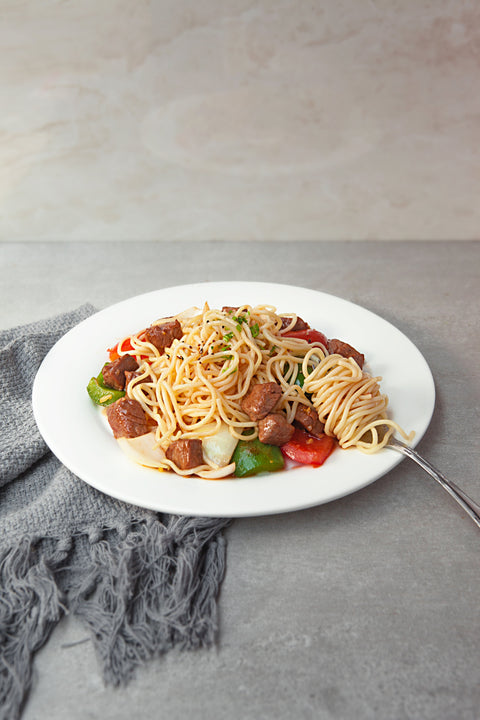
Diabetes is a chronic condition in which the body cannot properly manage blood sugar (glucose) levels. Many people in Singapore and around the world live with type 2 diabetes, and they constantly look for dietary options that help control glucose without feeling deprived. Doctors and nutritionists often recommend foods with high fiber, low glycemic load, and natural compounds that help regulate insulin. One option that fits these needs is Haecho Miin Kelp Noodles, a Korean noodle made from seaweed.

Kelp is a type of brown seaweed that has been enjoyed for centuries in Asian cuisine, and now it is gaining attention as a modern health food. If you or your loved ones are looking for healthier noodle alternatives that fit into a diabetes-friendly diet, this article will guide you through why kelp noodles can be a smart choice. Let’s explore whether kelp is really good for diabetes and why these unique noodles are worth adding to your kitchen!

Your Blood Sugar Safety Net: The Kelp Noodle Nutritional Profile
The beauty of Haechomiin Kelp Noodles lies in what they don't contain. Made primarily from sea kelp, water, and sodium alginate (a seaweed derivative), they are a clear winner for carb management. Here is the compelling nutritional breakdown for a typical 100g serving:


Is Kelp Good for Diabetes?
Kelp shows promise as a food that can support blood sugar control and offer benefits for people with diabetes. Studies of seaweeds (including kelp) have found that regular consumption may influence glycemic control by lowering postprandial blood glucose and improving markers like HbA1c and insulin resistance. The polysaccharides in kelp, such as alginate and fucoidan, have been shown in animal and human trials to reduce blood glucose rise after meals.

Moreover, kelp has very little digestible starch and sugar, which means it does not cause sharp blood sugar spikes like refined carbs do. Seaweed’s fiber content also slows digestion and helps moderate glucose absorption. In the case of Haecho Miin Kelp Noodles, the product’s design (low in carbs, low in calories, no starch) aligns well with what research suggests is beneficial for diabetes management. Kelp noodles stand out because their unique nutrition profile delivers three powerful benefits:
1. Near-Zero Glycemic Impact
Traditional pasta and rice cause rapid blood sugar spikes due to their high content of digestible carbohydrates. Kelp noodles, conversely, contain minimal digestible carbs and 0 grams of sugar, giving them a near-zero Glycemic Index (GI).

The Benefit: You can enjoy a full meal without the rapid glucose surge, leading to more stable blood sugar levels throughout the day. This reduces the burden on your pancreas and supports overall glucose control.
2. The Power of Sea Fiber (Alginates)
Kelp contains a natural compound called alginate, a powerful dietary fiber. Research on brown seaweeds suggests these compounds can act as a "glucose shield" by slowing down the digestion and absorption of carbohydrates in your gut.

The Benefit: The fiber helps regulate the rate at which nutrients enter your bloodstream, promoting a smoother, gentler blood sugar curve. A high-fiber diet is consistently recommended by health professionals for diabetes management.
3. Effective Weight Management

Weight management is a cornerstone of Type 2 diabetes care. At less than 10 calories per serving, Haechomiin Kelp Noodles allow for volume eating. You can fill your bowl and feel satisfied without the caloric cost, making it easier to maintain a calorie deficit and support a healthy weight.
Bonus: Essential Micronutrients

Kelp is a superfood rich in minerals absorbed from the sea. Notably, it contains Iodine, which is vital for thyroid function. Since thyroid issues can sometimes be related to or complicate diabetes, integrating nutrient-rich foods like kelp is a smart choice for overall metabolic health.
Simple Tips for Cooking Kelp Noodles

-
Rinse: Always drain and rinse the noodles well under cool water.
-
Soften (Optional): For a softer, more traditional noodle texture, soak them in hot water with a touch of baking soda and lemon juice for a few minutes before use.
- Diabetes-Friendly Pairing: Use them as a base for lean protein (fish, tofu, chicken) and a generous amount of non-starchy vegetables. Dress with simple, low-sugar sauces like vinegar-based dressings or light soy sauce.

Don't let your diet limit your enjoyment of food. Haechomiin Kelp Noodles provide the structure and satisfaction of a great noodle dish, letting you focus on delicious flavor without the fear of a blood sugar spike.




Comments (0)
There are no comments for this article. Be the first one to leave a message!